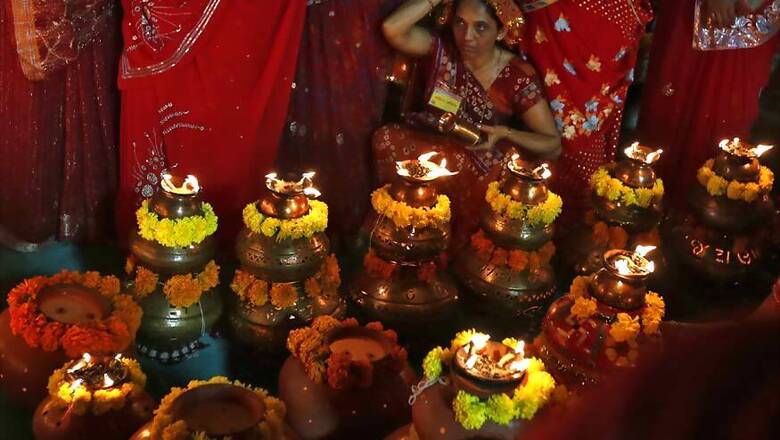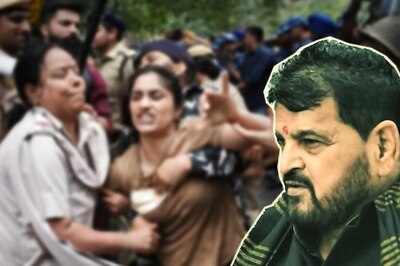
views
Navratri is celebrated among Hindus to welcome Goddess Durga in the Gregorian months of September and October. Devotees fast and avoid food grains like rice, wheat and pulses for nine consecutive days during Navratri.
According to the Shakta and Vaishnava Puranas, Navratri theoretically falls two to four times a year. Of these, the Sharada Navratri near autumn equinox (September-October) is celebrated with the most pomp and grandeur.
The Sharada Navratri commences on the first day of pratipada of the lunar month of Ashvini and is celebrated for nine nights once every year during this month.
Apart from Goddess Durga in the east and Lord Rama in the north and west, various the goddesses such as Saraswati and Lakshmi, gods such as Ganesha, Kartikeya, Shiva and Krishna are regionally revered.
In the eastern and northeastern states of India, Navratri is synonymous with Durga Puja, wherein the ten-armed goddess battles and emerges victorious against Mahisasura (the buffalo demon), thus helping restore Dharma in the world. On the contrary, in the northern and western states, it is synonymous with Rama Lila and Dussehra that celebrate the battle and victory of god Rama over the demon king Ravana. Notably, Navratri sees a common theme in the battle and victory of Good over Evil wherever it is celebrated.
According to legends, Mahisasura, the king of demons waged a war against the Gods in heaven after he received a boon of immortality from Lord Brahma. Being defeated in war at the hands of the demon king, all Gods along with the holy trinity of Shiva, Brahma and Vishnu pooled in their diving powers to give rise to Shakti, who killed the fearful buffalo-demon after nine nights of furious battle. The tenth day became Vijaya Dashami or the celebrations of the victory of good over evil.
Another legend cites Lord Rama who before waging a war against Ravana to rescue his wife Sita, worshipped the Goddess to seek her blessings. The Prince required 108 lotuses but managed to procure 107 during the puja. To complete the count, Rama decided to offer one of his eyes instead. Goddess Durga emerged and blessed him with her divine 'shakti' for his act of selflessness.
A lot of places also believe that Uma, or Durga, the king of Himalayas comes home for these days along with her children and the festivities celebrate her homecoming on Earth.
The final day of Navratri in North India is called Dussehra and in the East, Vijay Dashami.



















Comments
0 comment